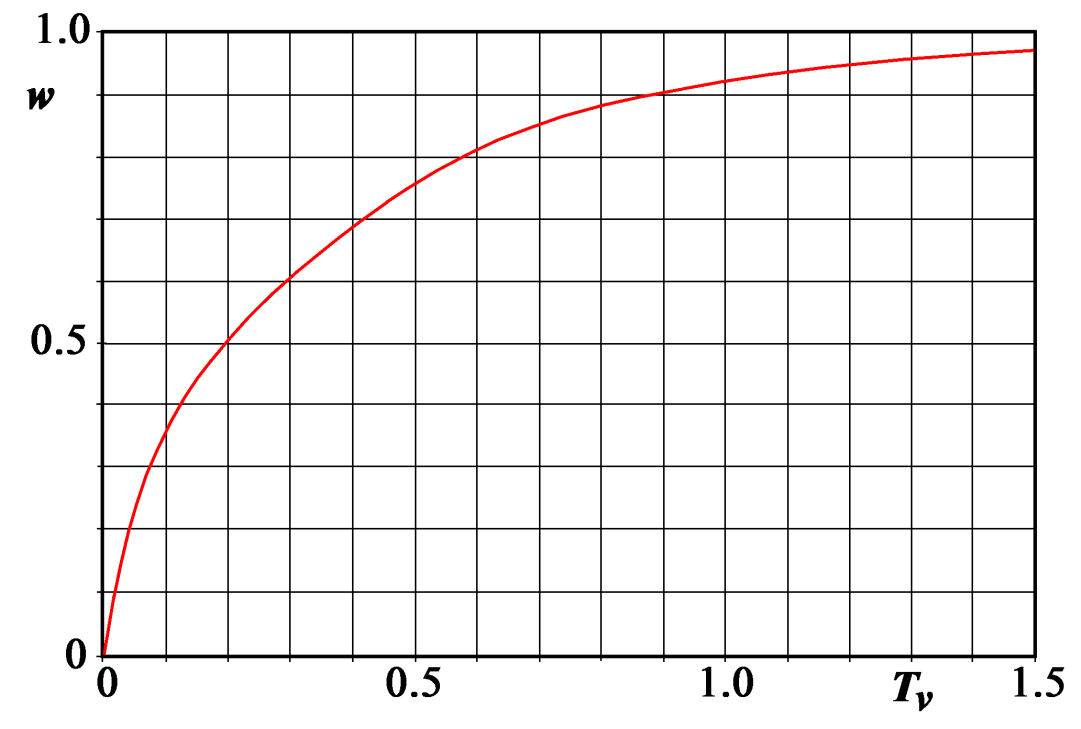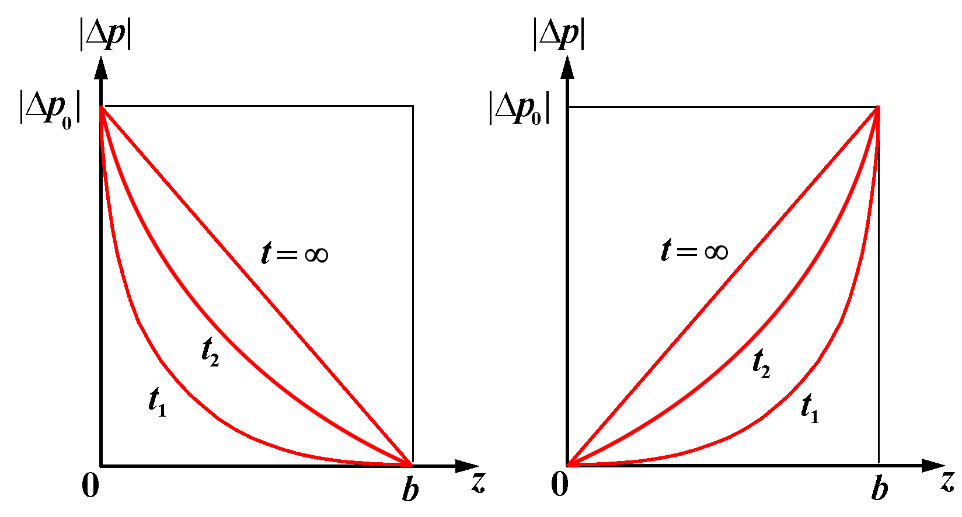2.6 Time Factor and Compaction Profile
The (positive) compaction η(t) of the half aquitard at time t is:
![]()
Substituting Equation 20, and integrating term by term leads to Equation 22.
| (22) |
For t = 0 we get η(0) = 0, while for t = ∞ Equation 22 becomes Equation 23.
| (23) |
The above series converges to π2/8 and therefore η(∞) is the ultimate compaction of the half aquitard, as was already pointed out for the various aquifers represented by Equations 4 and 5 and is expressed here as Equation 24.
| (24) |
It may be interesting to compute the time needed by the aquitard to achieve a given percentage of full compaction, η(∞), provided by Equation 24. To this aim we introduce the dimensionless time factor Tv (Equation 25) as defined by Terzaghi (1923).
| (25) |
Denoting the percentage compaction as w, Equation 26 shows that it is a function of only Tv.
| (26) |
The behavior of w(Tv) is shown in Figure 17. There are basically two ways to use Figure 17:
- enter Figure 17 with a given percent of the final compaction, to obtain the corresponding Tv and calculate the time t needed to reach that percentage from Equation 25; or,
- select a time t, compute Tv from Equation 25 and derive the percentage compaction from Figure 17.
The compaction of the aquitard at time t is shown as Equation 27.
| η(t) = 2w(Tv) η(∞) = w(Tv) cbΔp0b | (27) |

Figure 17 ‑ Behavior of the aquitard compaction η(t) relative to the ultimate compaction η(∞), cbΔp0b versus time factor Tv.
Figure 17 is also helpful to compute the compaction of an aquitard that is in contact with a non‑productive aquifer, for example, with Δp0 = 0 at the aquitard bottom. In fact, notice that because of the linearity of Equation 17 and, with Δp0 equal on both aquitard top and aquitard bottom, we can superpose the effects, namely we can separately compute the compaction of the aquitard subject to Δp0 ≠ 0 on top and Δp0 = 0 on bottom and vice versa Δp0 = 0 on top and Δp0 ≠ 0 on bottom. The Δp behavior versus z for various time values is shown in Figure 18 from right and left respectively.

Figure 18 ‑ Schematic behavior of the pore pressure decline in an aquitard subject to an instantaneous pore pressure drop Δp0 on top (z = 0, left) and bottom (z = b, right) for representative time values.
The area underlying a Δp0 profile at any given time, for instance t1, is the same on the left and right images of Figure 18. Such an area, however, is proportional to the compaction of the aquitard subject to Δp0 ≠ 0 on both top and bottom, that is, half the value η(t) provided by Equation 22. In summary, if one of the adjacent aquifers is not pumped the aquitard compaction is given by Equations 22 and 24 at current time t and t = ∞ respectively. We can use the graph of Figure 17 as explained earlier with the percent compaction relative to the final compaction described by Equation 24.
A straightforward generalization is the implementation of the previous outcome to the case where aquifers top and bottom experience different pore pressure drops, that is, Δp1 ≠ Δp2. The ultimate aquitard compaction is given by Equation 28.
| (28) |
Figure 17 may be used as described above along with the percentage relative to η(∞) of Equation 26. In case for which the pore pressure drops Δp1 and Δp2 on top and bottom of the aquitard are a continuous function of time, they can be approximated with stepwise functions with the effects of the incremental drops superposed at the corresponding times.
